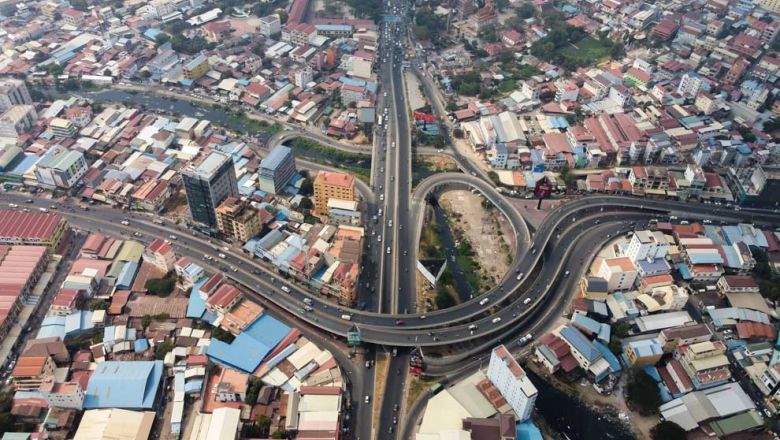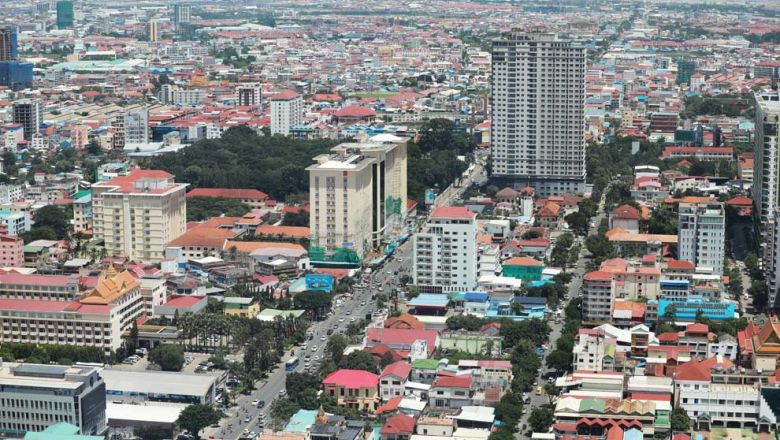Int’l trade rises as commerce ministry lays out 2023 plans
Int’l trade rises as commerce ministry lays out 2023 plans
Cambodia's 9.19 per cent on-year rise in foreign trade value to the $52.425 billion logged by Customs for 2022 was driven by “in-depth reforms in all areas”, improvements in export competitiveness, and an increasingly favourable business and investment environment, according to Minister of Commerce Pan Sorasak on January 30.
Sorasak was speaking on the first of the commerce ministry’s two-day annual meeting, where officials reviewed the Cabinet-level agency’s performance in 2022 and set objectives for 2023.
The Kingdom’s imports and exports totalled $29.942 billion and $22.483 billion in 2022, respectively, up 4.32 per cent and 16.44 per cent on a yearly basis, narrowing the trade deficit by 20.60 per cent to $7.459 billion, according to the General Department of Customs and Excise (GDCE).
Cambodian goods exports, as well as the broader economy, maintained significant growth last year, even as the world struggled under the weight of rising inflation and fallout from the Ukraine conflict, on top of Covid-19, fuel, energy, and food crises, the minister said.
This, he said, came after the Kingdom’s coronavirus vaccination rates, among the highest in the region, compelled the government to adopt an endemic approach to Covid management and move to allow for the full resumption of socio-economic activity in November 2021, continuing to lift additional restrictions throughout 2022 that impeded commerce and trade.
Sorasak ascribed the nearly double-digit trade growth recorded last year to, among other things, bilateral and multilateral free trade agreements (FTA), as well as an uptick in exports propelled by market diversification together with preferential trade arrangements maintained by various jurisdictions.
The ministry remained “highly committed” last year to “turning challenges into opportunities” and improving trade by: carrying out “in-depth reforms in all areas; [supporting] reductions in [associated] costs and [thereby] bolstering the competitiveness of Cambodian exports; … [and promoting] a favourable environment for doing business and investing”, he said.
Cambodia Chamber of Commerce (CCC) vice-president Lim Heng previously suggested to The Post that the Kingdom’s foreign trade growth during these trying times, especially on the export front, is due to the government’s “flexible” strategies and efforts that he said are adaptable to global dynamics.
The success of the Kingdom’s coronavirus vaccination campaigns and relatively early adoption of a living-with-Covid approach have enabled an economic reopening and a steady inflow of new investment, he argued.
“Given all this progress, I believe that Cambodia’s international trade volume will increase even further in 2023,” Heng predicted.
At a January 25 public forum on macroeconomic management and the 2023 budget law, Ministry of Economy and Finance permanent secretary of state Vongsey Vissoth disclosed that the government expects Cambodia’s economic growth to accelerate from 5.2 per cent in 2022 to 5.6 per cent this year.
However, he noted, the 2023 growth forecast is a downgrade from the 6.6 per cent that the government put forth in October, prompted by uncertainty about global economic growth tied to the Ukraine conflict, climate change and the Covid-19 crisis.
Still, the revised figure – which Vissoth affirmed had been personally approved by Prime Minister Hun Sen – is considerably greater than the 2.7-per-cent growth rate estimated for the global economy, he assured.
He contended that the Kingdom’s economic growth is underpinned by the increasing diversity in its export mix, with textile-related items accounting for a considerably smaller share than before.
“To deal with these difficulties, we must minimise the negative impact, and seize opportunities for progress, because every crisis represents an opportunity,” he stressed.
For reference, GDCE figures show that Cambodia’s top export market was the US at $8.969 billion, up 19.74 per cent on-year, followed by Vietnam ($2.169 billion; up 9.25%) and mainland China ($1.241 billion; down 17.85%).
The top import source was mainland China, accounting for $10.446 billion, up 7.86 per cent on-year, followed by Vietnam ($3.967 billion; up 26.20%), Thailand ($3.833 billion; up 10.66%) and Singapore ($3.230 billion; down 36.62%).
The top export category was articles of apparel, knit or crocheted – or Chapter 61 of the harmonised system (HS) – at $6.367 billion, up 9.41 per cent on-year, followed by articles of apparel, not knit or crocheted (Ch 62; $2.668 billion; up 21.37%), electrical, electronic equipment (Ch 85; $1.998 billion; up 84.83%), articles of leather, animal gut, harness, travel goods (Ch 42; $1.861 billion; up 17.64%) and footwear, gaiters and the like (Ch 64; $1.737 billion; up 24.77%).















